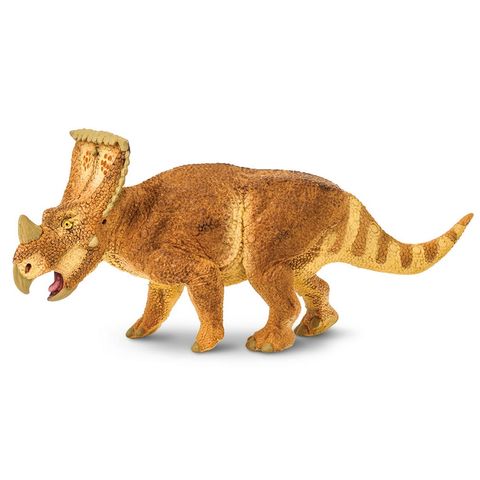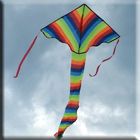
Description
Vagaceratops was named in 2010 and showed that horned dinosaurs were more diverse than previously supposed. This four-legged plant eater lived in North America during the late Cretaceous, 75 million years ago.
- Scientific Name: Vagaceratops irvinensis
- Characteristics: Vagaceratops had a short horn on its none, a curved beak, and a distinctive square bony frill on the back of its head. The flat rear edge of the frill was covered with a row of bony projections or ‘hornlets’. Vagaceratops walked on four short robust legs. Its front legs had five toes, of which three had blunt claws, and the hind feet had four large toes with hoof-like claws. It grew up to 16 feet long.
- Size and Color: This model is 6.25 inches long and 1.75 inches high. It is orange with a cream underbelly and stripes on its tail.
- All of our products are Non-toxic and BPA free
History
The remains of several Vagaceratops skulls were excavated from the Upper Dinosaur Park Formation in Alberta, Canada, during 1958. It took many years for this dinosaur to be recognized as a distinct species, but in 2001 it was finally regarded as a new species of Chasmosaurus called ‘C. irvinensis’. This name refers to Irvine, Alberta, where the first specimen was found. A later study published in 2010 recognized it as a distinct from Chasmosaurus and so it was given a new genus name as well, Vagaceratops, meaning ‘wandering horned-face’.
Vagaceratops is unusual because it lacks brow horns and has a square bony frill. Its frill contains a pair of large openings so it was not solid bone and wasn’t a reliable shield. It was more likely used for show than for protection, and might have been colorful.
- Recommended Age: 3+
- Size in cm: 16 L x 4.5 W x 7.5 H
- Size in inches: 6.3 L x 1.77 W x 2.95 H
- UPC: 095866301804








